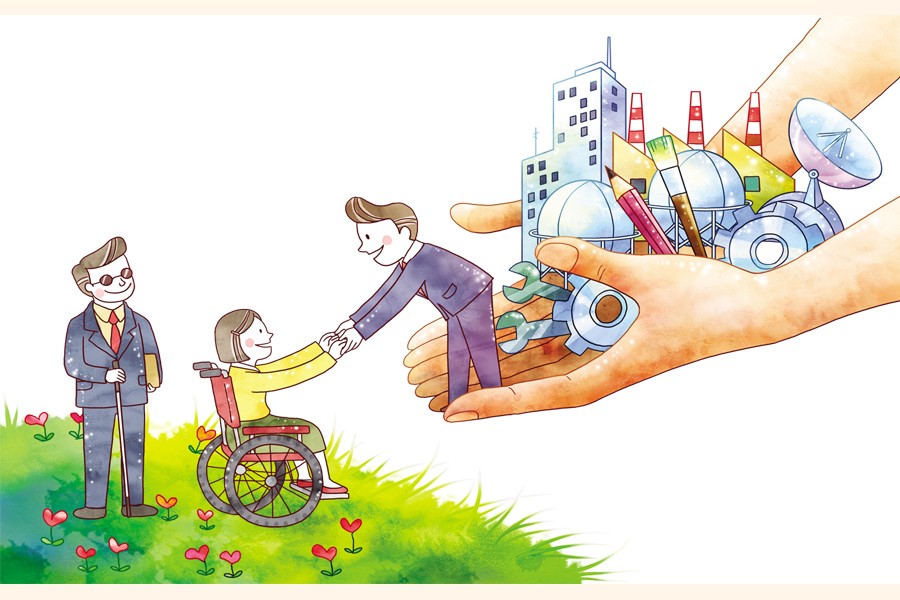Linking poverty and disability
Md. Shahidur Rahman |
January 06, 2024 00:00:00

Disability arising out of a disease, accident, or any congenital problem is a crucial health issue affecting millions of people all over the world. Prevalence and management capacity of disability have wide cross-cultural and geographical variations. Despite the lack of specific data there are reasons to believe that third-world countries have more disabilities and fewer resources and capacity for rehabilitation. So, there is a strong relationship between poverty and disability. Marginalised populations, disadvantaged or at-risk populations such as women, older people, and poor people are inappropriately affected by disability. Children from poverty-stricken families, indigenous populations, and ethnic minority groups are significantly at higher risk of experiencing disability. There is a higher prevalence of disability in lower-income countries than in higher-income countries. Poor people from lower-income countries are usually involved in high-risk jobs which make them vulnerable to injury and disability. Because of exaggerated life stress, poor health status, and poor living conditions due to poverty, people at low resource outset are more vulnerable to disease and disability. Of inadequate support from affluent persons as well as from the government as universal health coverage or other social security measures, they are compelled to spend their last savings to meet the treatment costs and get poorer. They are also common victims of road traffic accidents when they travel on risky roads and vehicles. There are many other shreds of evidence for a link between disability and poverty in low and middle-income countries and there is an urgent need for further research and policy action to break the cycle. This feature article intends to find out the relationship between poverty and disability and reveals how poverty influences sufferings from disability and vice versa.
Disability and poverty have a mutual relationship, meaning that both are the cause and consequence of the other. Marginalised populations and people at the grassroots level in low and middle-income countries are more vulnerable to injury as well as disability. Injury or impairment increases as a result of living in unsafe conditions. Ensuring safer conditions is a prerequisite to preventing disability. People with disabilities and their families face higher risks of poverty and impoverishment, because of their low access to education and employment and also the cost of care. Failure to address the relationship and the interaction between disability and poverty will undoubtedly hinder economic growth and development, including sustainable development goals. People with disabilities have to accommodate additional expenses related to their disability (e.g., assistive devices, extra transportation). So economic poverty among people with disabilities continues to prevail. Poverty alleviation and development programmes will be hampered if we fail to manage the disabilities of poverty-stricken people. The impact of poor people with disabilities on economic growth and social security is high. The poverty reduction policy of low-income countries should be critically structured to address poverty and
disability simultaneously. Bangladesh, a developing country in South Asia, has a fast-growing economy despite the aftermath of a touching thrush of the global coronavirus pandemic as well as global crisis. Poverty reduction programmes are progressing but addressing the problems of the disability is unsatisfactory. Poverty alleviation and reducing the discrimination of income between poor and rich are the two unprecedented challenge to developing countries. If we can improve the quality of life of these groups of people and bring them to the mainstream of life, they can better contribute to society as well as to the nation. Policymaking and research agendas should explicitly cover disability and poverty concomitantly in developing countries. The mode of addressing the crisis may have cross-cultural and geographic variations. We need to approach the problem in different ways in different countries. We need further research to investigate the potential adverse relationship between economic development and the disability/poverty association.
Professor of Physical Medicine and Rehabilitation (Rtd), Bangabandhu Sheikh Mujib Medical University, Bangladesh
shahidurpmrbd@gmail.com